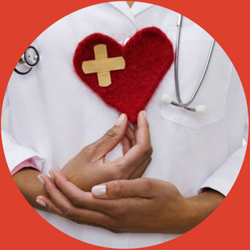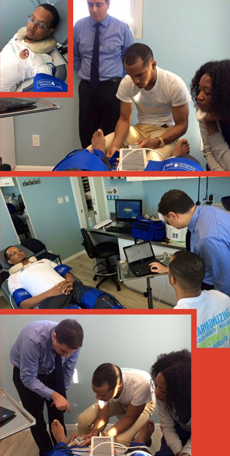

|
|
|||||||||||||||||||||||||
|
 |
||||||||||||||||||||||||||||||||
|
|||||||||||||||
Do you know someone with high blood pressure? That person may be you. Many times people find out when it is too late (heart attack, stroke or kidney failure). That is why high blood pressure is called the silent killer. Yet it does not have to take you out. It is east to and there are effective treatments for high blood pressure. |
|||||||||||||||
|
|||||||||||||||
What about Cholesterol? |
|||||||||||||||
What is cholesterol? |
|||||||||||||||
Cholesterol is a soft substance that is found in everybody. It is very important for healthy living. However, if there is too much cholesterol in your blood you are at risk for blockage of your arteries. |
|||||||||||||||
Cholesterol is naturally produced in your body and is found in the foods that you eat. Some people have increased cholesterol in their body even if they don’t eat too much cholesterol in their diet. |
|||||||||||||||
When you see your doctor regularly the fats in your body are measured. Two types of cholesterol that are measured in your body are the LDL and HDL. Triglycerides, another type of fat, may be measured as well. |
|||||||||||||||
The LDL cholesterol is often called the bad cholesterol and the HDL cholesterol is called the good cholesterol. If the LDL cholesterol is high you may be at increased risk for heart disease and stroke. The walls of your arteries are vulnerable to being blocked by plaque buildup from the LDL cholesterol. When they get blocked up with plaque they stop the blood flow to your heart and brain. |
|||||||||||||||
What are the symptoms of High Cholesterol? |
|||||||||||||||
NONE! There are no real symptoms of high cholesterol. You only know if you have high cholesterol when your doctor does a test which shows high cholesterol. Finding out about your cholesterol level is very important because it can prevent a stroke or heart attack if treated. Your doctor will work with you to reach your target level based upon your past medical history. |
|||||||||||||||
How high is too high? |
|||||||||||||||
A high level of LDL puts you at risk for heart disease. There are certain things that put you at risk for heart disease. Among those are the following: |
|||||||||||||||
Diabetes, high blood pressure, smoking, overweight, older age, male gender, stressed out, inactive and family history. If you have any 2 of these you should definitely see your doctor to determine what is the target LDL and HDL level for you. You should especially see their doctor for evaluation and treatment if you have diabetes, heart disease, stroke or blockage of any of your arteries. |
|||||||||||||||
What must be done to lower cholesterol? |
|||||||||||||||
Many people are fighting to lower their cholesterol and winning the battle with diet, exercise and medicines. You can do it too! Eating foods that are fresh vegetables, fruits and avoiding sugary foods and greasy foods will help. Eating fiber in your diet will also help lower your cholesterol along with stopping smoking if you are a smoker. Maintaining a healthy weight is a very important step to lowering your cholesterol and after consulting with your doctor you should start an exercise program. Finally you may need to have medicine to help you lower your cholesterol, it is better to exercise, eat right and possibly take medicine than to have a heart attack or a stroke. |
|||||||||||||||
YALE FACULTY AFFILIATE DOCTOR CONDUCTS ABI TRAINING WITH NMAC STAFF |
||||||||||||
|

Decrease Your Risk of Heart Disease and Other Illnesses





